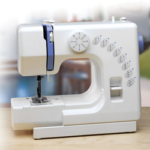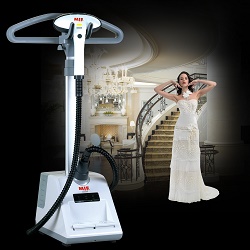The main differences between the sewing machine and overlock
For those who are interested in the question, how does an overlock differ from a modern sewing machine, first of all it is worth understanding that these are devices aimed at performing different functions. Household models of machines perform double stitch and are intended primarily for connecting parts. The overcasting device forms a multiline (3, 4, 5) seam. Combined models that are available on the current market, constructively can not perform the operations of these two devices at the same time.
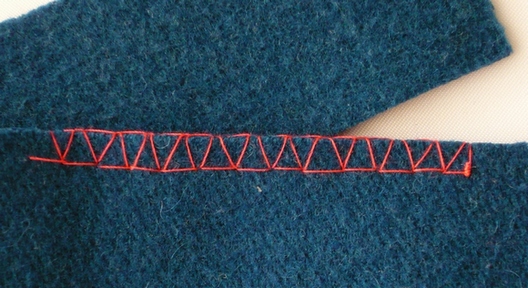
Content
Why a sewing machine does not replace overlock
Household models of sewing machines are not able to sweep over fabrics, more precisely, they do it differently from the equipment specially provided for these tasks. Double-thread apparatus performs only an imitation of overcasting seam.But the sale is still present multifunctional sewing machines with overlock. When the first devices capable of performing a zigzag stitch appeared, they were used just for processing the cut edges of the fabric. Subsequently began to let out specially provided for these purposes overlock feet.
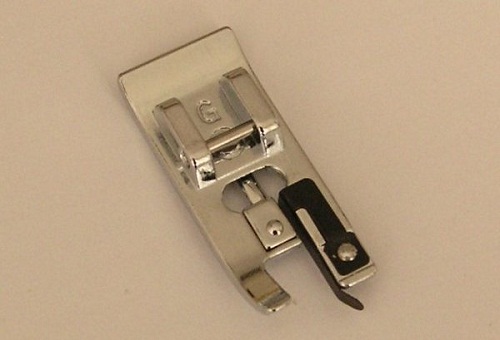
Overlock foot
Today, you can install such a nozzle on most models of sewing machines. They are supplied with the device, and are purchased by the user separately. In addition, advanced models are able to perform high-quality obmetochnye stitches. Such devices are considered to be combined models of two devices. But in fact, all the functions of an ordinary overlock are beyond their power.
The main differences between overlock and sewing machine
In the shuttle vehicles used two strings: the upper one is loaded from the main coil, and the lower one is wound onto a bobbin. The stitches are formed by binding, thanks to the shuttle. Using a special overlock foot and a zigzag program, it is quite qualitatively possible to process the finished (i.e., cut edge) on a conventional typewriter.The design feature of such a nozzle allows stitches exactly along the edge of the cut section of fabric. But in terms of quality, such a seam will still yield to processing on overlock equipment.
Due to the specificity of the performance, a double-stitch seam may not withstand strong tension.
Used in overlock immediately several threads. Today, 4-thread models are quite popular. Also, such devices can be 2 (now practically not used), 3 or even 5 thread. The bottom threads are not tucked into the bobbin, but immediately into the looper. This is a metal hook, an exciting needle thread in the process of forming a chain stitch.
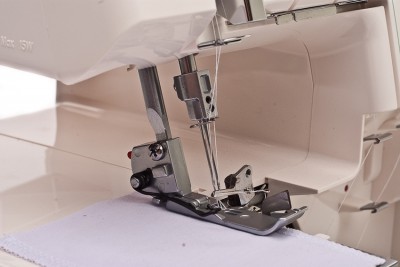
Thread consumption in the overlock is much higher than in a sewing machine. This is due not only to the involvement of several coils in the work. The overlock stitch itself on such a device is obtained elastic, strong and tensile by increasing the length of each stitch. Therefore, for overlock equipment, it is recommended to use not ordinary spools of thread, but large thread reels. Modern overstitch equipment has and lath rail - in the process of work, it slightly stretches the fabric.This option is especially useful when working with knitted material.
Another difference between overlock and ordinary sewing machine is the function of grinding. This means that when overcasting, it cuts off the edge of the fabric.
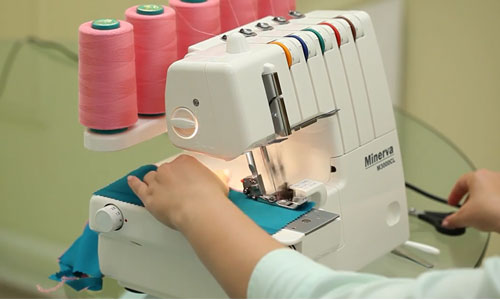
What overlock to buy
Multi-thread overlocks are much more practical. Today, four-thread models are very popular. They provide two pairs of loopers and needles. If necessary, such devices are transformed into three-filament (if you turn off one needle) or double-filament, if you install a special plate (converter) on the looper.
Due to this, similar models have several overlay programs. When one pair is disconnected: a needle and a looper, it becomes possible to make a two-thread narrow overstitched seam, which is used to process thin and medium density fabrics.
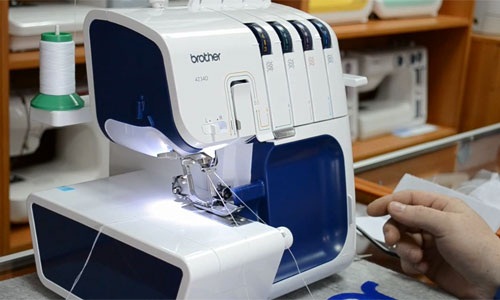
Overlock brother
Overlock stitches at the sewing machine
To cover the edge of the fabric, it is not always necessary to purchase additional expensive equipment. For many users who do not sew on a professional basis, there is no need to buy such devices. Sometimes there are quite enough special modes for overlaying on a standard sewing machine.
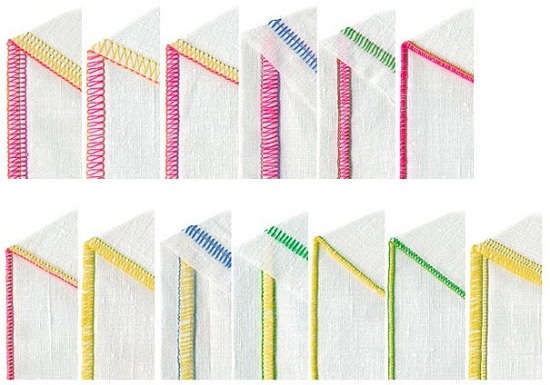
Overlock lines
Modern models include various types of edge-processing modes. For different types of fabric (for example, cotton, wool, etc.) may be provided its own program. Correctly pick up the stitch mode will help the instruction. Sometimes the manufacturer describes the seams directly on the front panel of the device. Additional obmetochny lines (in parallel with a usual zigzag) increase quality of a seam.
When buying a sewing machine, you should pay attention to the presence of overlay lines in the list of programs executed by the device, especially if the purchase of an overlock is not expected.
Overlock and sewing machine differ from each other by stitch type, processing of fabric edges, thread consumption. In turn, modern models have an imitation of overcasting seams. And when using additional legs, the seam treatment on the machine will be as comfortable as possible. But for professional paving and certain types of fabrics, special overlock equipment is required.

/rating_off.png)






